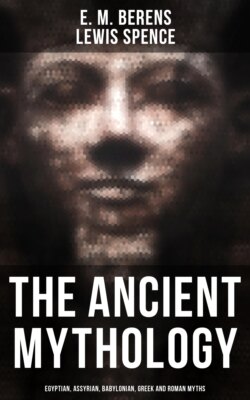Читать книгу The Ancient Mythology: Egyptian, Assyrian, Babylonian, Greek and Roman Myths - Lewis Spence - Страница 47
На сайте Литреса книга снята с продажи.
The Great Gods
ОглавлениеIn the phase in which it becomes first known to us, Babylonian religion is neither Semitic nor Akkadian, but Semitic-Akkadian: that is, the elements of both religious forms are so intermingled in it that they cannot be distinguished one from another; but very little that is trustworthy can be advanced concerning this shadowy time. Each petty state (and these were numerous in early Babylonia) possessed its own tutelar deity, and he again had command over a number of lesser gods. When all those pantheons were added together, as was the case in later days, they afforded the spectacle of perhaps the largest assembly of gods known to any religion. The most outstanding of these tribal divinities, as they might justly be called, were Merodach, who was worshipped at Babylon; Shamash, who was adored at Sippar; Sin, the moon-god, who ruled at Ur; Anu, who held sway over Erech and Der; Ea, the Oannes of legend, whose city was Eridu; Bel, who ruled at Nippur, or Niffur; Nergal of Cuthah; and Ishtar, who was goddess of Nineveh. The peoples of the several provinces identified their prominent gods one with another, and indeed when Assyria rose to rivalry with Babylonia, its chief divinity, Asshur, was naturally identified with Merodach.
Types of En-lil, the Chief God of Nippur, and of his Consort, Nin-lil from Religious Belief and Practice in Babylonia and Assyria
In the chapter on cosmology we have seen how Merodach gained the lordship of heaven. It has been shown that the rise of this god to power was comparatively recent. Prior to the days of Khammurabi a rather different pantheon from that described in later inscriptions held sway. In those more primitive days the principal gods appear to have been Bel or En-lil, Belit or Nin-lil his queen, Nin-girsu, Ea, Nergal, Shamash, Sin, Anu, and other lesser divinities. There is indeed a sharp distinction between the pre- and post-Khammurabic types of religion. Attempts had been made to form a pantheon before Khammurabi's day, but his exaltation of Merodach, the patron of Babylon, to the head of the Babylonian pantheon was destined to destroy these. A glance at the condition of the great gods before the days of Khammurabi will assist us to understand their later developments.
